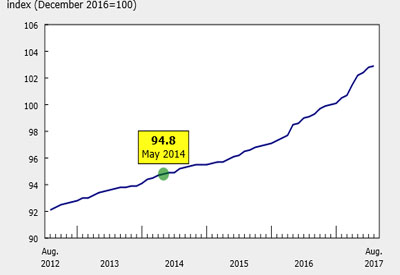50 Years of Transition in Our Distribution World

June 18, 2018
By Rick McCarten
The heyday for the electrical industry, like for so many other industries, was in the 1950s. The world was just coming back from a devastating war; over 50 million people, mostly civilians, lost their lives. North America was having a baby boom. The world required everything and everybody to rebuild itself.
This time period allowed many companies to grow, including the electrical distributor. Homes and businesses were on a rush to build and be occupied. This demand meant that there was a new market that could take a standard range of products and allow them multiple turns. One of those markets was electrical products.
Multiple turns mean that margins can be decreased. It is no coincidence that in those days, electrical distributors were known as electrical “wholesalers”. Customers who purchased from them could save money by purchasing at wholesale prices.
Wholesale prices were determined by a simple formula. Traditional sales saw, on average, three turns a year of inventory. For a company, retail or specialized, the rule of thumb is 3 turns X 40% mark-up = 120% a year. Companies need 20% on their investment to pay for ongoing expenses, such as staff, inventory, credit, warehouse and logics. Electrical wholesalers could customize their offerings to their customer base and improve their turns from 3 to 6. To make the magic 120% now only required a 20% mark-up (6 turns X 20%). The electrical wholesaler went on to be one of the biggest wholesalers in North America.
All was well and good until companies like Walmart and Home Depot figured out how to improve their turns. With the use of loss leaders, selling below purchase, large inventory and strong promotions, they were able to improve achieve the same number of turns as wholesalers (6) and therefore match the 20% mark-up. This hurt traditional businesses like Sears and Eaton, who were still at 40% mark-up. It also hurt the wholesalers as well, as they lost their price advantage.
Next came technology, which made it easier for companies to go direct rather than through a middle man. This “disintermediation” of new systems and logistics made it easier for a product source to ship direct to retail and not go through a distribution source.
It is interesting that the name of wholesale then changed to distribution. Companies were trying to emphasize their service and not their price.
Then along comes the Internet and the credit card.
Companies like Amazon want to come in and do 20 turns a year, which would mean only a 6% mark-up (20 turns X 6% mark-up = 120%). Others like Costco want to maximize turns, but lower their inventory costs by having customers pay for it upfront in membership. And of course, credit cards get the money in sellers’ hands before the product is delivered.
While everybody still has to pay for employees, warehouse and logistics, companies like Costco and Amazon have reduced their credit and inventory costs. If they can reduce their expenses to 14% of costs, rather than 20%, and improve their turns from 6 to 12, they could conceivably get their mark-up to be less than 10% (12 turns X 9.5% = 114%).
It is getting tougher to find the right product mix to compete on turns and margins. In other words, it is getting tougher to make a living on product sales alone. This year’s EFC research study asked members what would the greatest advantage of technology improvements for their logistics and supply chain be? Overwhelmingly, members said improved service. The thought of competing in today’s market on price alone has left our industry, just like the name “wholesalers”.
Moving forward, service will mean offering your customers reduced time, energy, concern and employment. Reducing the turns and the mark-up is now replaced with reducing the customer’s overall costs. These real savings for the customer can far out-perform any savings they receive by shaving a little off the mark-up.
Rick McCarten is VP, Operations, Electro-Federation Canada. Read Part 1 here: www.canadianelectricalwholesaler.ca/latest-news/2086-the-supply-chain-sacrifice











